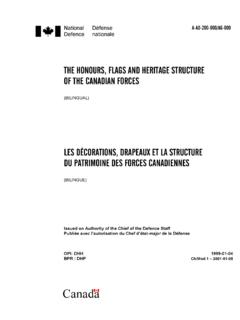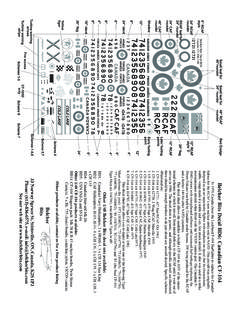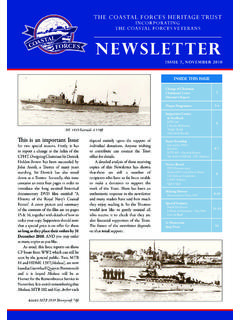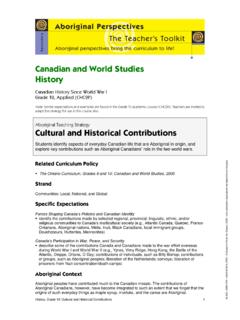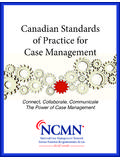Transcription of THE FAIRMILES - Coastal Radio
1 October 31, 2007 This is the Seventh Section of the manuscript Radio Stations Common? Not This Kind by Spurgeon G. Roscoe Radioman Special Royal canadian Navy 1956-1961 Graduate Radio College of Canada, Toronto Graduate National Radio Institute, Washington First Class Certificate of Proficiency in Radio # 6-108 Coast Guard Radiotelegraph Operators Certificate # 054 Amateur Radio Station VE1BC THE FAIRMILES When I realized I was never going to have a book on this history I kept adding to it for my own enjoyment especially this section on the FAIRMILES .
2 Joan and I will have been married 46 years on September 7th, 2007. Joan is one of the Kinney girls from Kinney Road, Ashmore, Nova Scotia and her family helped construct these FAIRMILES so the 15 Weymouth built copies are like family. Jerry Proc VE3 FAB now has his version of this section on his web site under Fairmile Radio Fit. Our shipyards were to turn out 456 merchant ships and some 300 naval vessels during World War II. These ships were built by a number of shipyards and the size of the yard normally dictated the size of the ships it constructed. The little ships known by the name Fairmile fascinate me most of the naval ships constructed.
3 The British Fairmile Company designed them, so the British and British Commonwealth navies called them FAIRMILES . They were designed as a sister ship to the Submarine Chaser of the United States Navy. At the outbreak of World War II steps were taken for the smaller canadian shipyards to build a fleet of these little ships for the Royal canadian Navy. Fifty-nine were built in yards on the Great Lakes. Fourteen were built in British Columbia and seven were built at Weymouth, Nova Scotia, for a total of 80. They were not named and were known as HMC ML followed by their number. The ML stood for Motor Launch. Their numbers commenced with 050 and terminated at 129.
4 Their pendant number commenced with the letter Q followed by their assigned number and this was painted on their bows. This was Q050 to Q129 inclusive. Their crews called them Q Boats or Q Fifty and so on. canadian Armed Forces This is Weymouth built HMC ML120 off the approaches to Halifax, Nova Scotia, under full power. Actually these canadian shipyards built eighty-eight of these little ships and eight were turned over to the United States Navy. All eight were of the early program and were absorbed within their Submarine Chaser fleet complete with Submarine Chaser number/names. Some parts of these little ships were built from a kit and the kits for these canadian built copies were manufactured here in Canada.
5 My former neighbour, the late Camille Comeau, helped construct the Weymouth built vessels. He spoke of fitting the prefabricated bulkheads in place. These kits were shipped to Weymouth by the railroad. He and I used to talk about these little ships quite often. Apparently there were nearly seven hundred copies of these little ships built in thirteen different nations from 1940 until 1945. An article written by James Davies titled Fairmile B Type Motor Launch that I managed to find on the Internet with my son s computer is most interesting. He included a beautiful colour painting by Tim Brown of HM ML192 in action shortly before she took a direct hit and was lost.
6 That is if there is such a thing as a beautiful picture of a warship in action with all guns blazing just before she was lost with a loss of life. Apparently there were ten FAIRMILES lost in that action that included HM ML192 in the early morning of Saturday March 28th, 1942, on the approach to St. Naziere. This is the painting by Tim Brown on the Jim Davis site. All canadian naval ships were assigned a four letter international call sign, during World War II, which was not listed with the International Telecommunication Union in Switzerland. These four letter call signs commenced with either a CG, CY or CZ prefix.
7 The canadian FAIRMILES used a four character coded call sign during World War II which had a prefix of 4X. The two-letter suffix was changed about every two months. Using any two letters at a time would make for 676 possible combinations. There was less than half this number of ships in canadian naval service so this left many possibilities. The larger ship, the minesweeper, corvette, frigate, destroyer and so on up the scale used a two letter coded call sign. This was done to confuse the enemy. Which enemy, theirs or ours, became the most confused from this is hard to say. The eighty canadian FAIRMILES and their four letter international call sign were.
8 ML050 CGYK ML051 CGYL ML052 CGYM ML053 CGYN ML054 CGYP ML055 CGYQ ML056 CGYR ML057 CGYS ML058 CGYT ML059 CGYV ML060 CGYW ML061 CGYX ML062 CGYZ ML063 CGZB ML064 CGZD ML065 CGZF ML066 CGZJ ML067 CGZK ML068 CGZL ML069 CGZM ML070 CGZN ML071 CGZP ML072 CGZQ ML073 CGZR ML074 CYRM ML075 CYRN ML076 CYRP ML077 CYRQ ML078 CYRS ML079 CYRT ML080 CYRV ML081 CYRW ML082 CYRX ML083 CYRZ ML084 CYTB ML085 CYTD ML086 CGXB ML087 CGXJ ML088 CZGM ML089 CGPN ML090 CGXK ML091 CZGN ML092 CGPM ML093 CGXL ML094 CGBN ML095 CZGP ML096 CGXM ML097 CGXP ML098 CGXQ ML099 CGXR ML100 CGXV ML101 CGXS ML102 CGXT ML103 CGXW ML104 CZGQ ML105 CZGR ML106 CZGS ML107 CZGT ML108 CZGV ML109 CZGW ML110 CZGX ML111 CZGY ML112 CYQQ ML113 CGZC ML114 CGZG ML115 CYQC ML116 CYQY ML117 CYRC ML118 CYRY ML119 CYVC ML120 CYWC ML121 CYZC ML122 CZDC ML123 CZDF ML124 CZDL ML125 CZDQ ML126 CZDR ML127 CZDS ML128 CZDT ML129 CZDV George Crowell was the Telegraphist in two of these FAIRMILES ; HMC ML064 and HMC ML095.
9 He went aboard the 64 right after she was built. The 64 carried a crew of 15: 2 Officers 1 Chief Stoker 1 Leading Seaman Coxswain 2 Stokers 2 Gunners 2 Ordinary Seamen 1 Telegraphist 1 Signalman 1 Asdic Operator 1 Torpedo Rate 1 Cook George Crowell VE1LB This is the crew of HMC ML064 in May 1942. George went from HMC ML064 to HMC ML095 and she had one extra crewmember making a total of 16 in her crew. By the time George went aboard HMC ML095 the navy had sufficient Radar Operators that one was assigned to HMC ML095. Radar Operator is George s terminology. Shipsearch Yarmouth Nova Scotia HMC ML064 alongside Weymouth, Nova Scotia George Crowell told me he worked the Gaspe from the Canso Strait on what they called the Port Wave frequency of 425 kcs.
10 All the small naval Radio stations around the coast used this frequency with the coast station and ship on the same 425 kcs frequency. He said his calling transmission was CFL CFL CFL V 4 XYZ 4 XYZ 4 XYZ K or whatever the two-letter suffix in his coded call sign happened to be. The Lists of World War II stations provide the following possible Port Wave Stations on 425 kcs: CFH Halifax, Nova Scotia CFI Quebec City, Quebec CFL Gaspe, Quebec CFS St. John s, Newfoundland this call sign was changed to CZP in November 1942 CGH Rigolet, Labrador (Lake Melville - Goose Bay area) CKH Toronto, Ontario CKK Shelburne, Nova Scotia (The transmitter was probably a PV500L and it probably had a leaky condenser in the power supply.)

